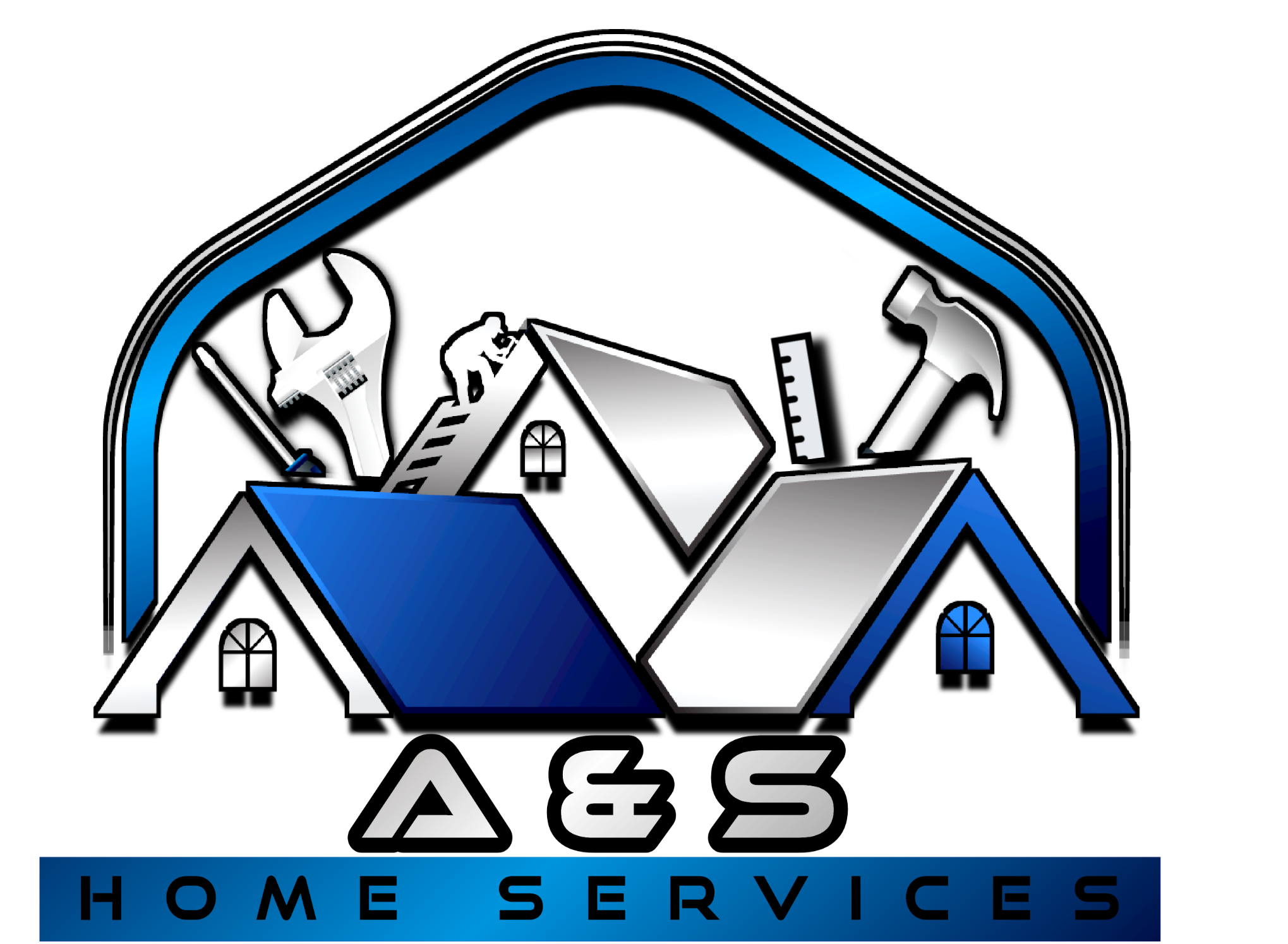Albany NY Painting Guide: Pro Tips from Handyman Services

Few home upgrades deliver a bigger visual payoff for less money than a good paint job. Whether you’re refreshing a bedroom, brightening a kitchen, or protecting your home’s exterior, the right techniques can make DIY painting a smart, satisfying project. But painting isn’t always as easy as it looks on TikTok—especially in Albany, where our four true seasons, humidity swings, and historic housing stock can complicate things. This guide walks you through the best tools, processes, and pro-level tricks to help you paint with confidence—and recognize when calling a local pro is the smarter move.
If you decide a trusted professional is a better fit for your schedule or scope, A&S Home Services offers reliable, detail-focused help right here in Albany, NY.
Why Painting Is One of the Smartest DIY Projects—But Not Always the Easiest
Painting offers an unbeatable return on effort. Compared to remodeling, it’s affordable, fast, and transformative. In many rooms, a single weekend can turn dated and dingy into fresh and inviting. You can do it with minimal tools, little specialized knowledge, and manageable prep—especially for interior walls in good condition.
Still, painting demands patience and precision. The difference between an average finish and a “did you hire a pro?” look usually comes down to surface prep, product selection, and methodical technique. In Albany’s older homes, you’ll also encounter challenges like plaster cracks, lead-safe prep on pre-1978 surfaces, and trim that needs advanced sanding or filling. Add in our climate (freeze-thaw cycles, high summer humidity, winter dryness), and exterior jobs can become technically complex. Knowing where your DIY comfort zone ends—and where a trained hand can save time and headaches—makes all the difference.
Albany-Specific Considerations: Weather, Materials, and Paint Types
Our Capital Region climate affects both how and when you paint:
- Seasonal temperature swings: Exterior paint cures best between about 50–85°F. Albany’s spring and fall provide reliable windows; summer heat and winter cold complicate things. Check daytime highs and night lows—overnight dips can ruin curing.
- Humidity matters: High humidity slows drying, increases tackiness, and can cause sagging or surfactant leaching (glossy, sticky patches). Aim for 40–60% indoor humidity when painting interiors. Use dehumidifiers or AC during muggy spells.
- Freeze–thaw and UV exposure: Exterior surfaces take a beating. South- and west-facing elevations fade faster. Oil-primed or alkyd bonding primers plus high-quality acrylic topcoats help resist peeling and fading.
- Historic and mixed substrates: Albany neighborhoods feature clapboard, brick, stucco, fiber cement, and aluminum or vinyl siding. Each material demands specific prep and products. For example, chalky aluminum needs thorough cleaning and a bonding primer; brick requires breathable masonry paint.
- Cold-weather flexibility: “Low-temp” acrylics allow exterior painting when temps are as low as manufacturer-specified thresholds. Still, beware of dew and overnight lows.
- Indoor winter work: Painting interiors in winter is often convenient—less outdoor humidity, more time indoors. Choose low-VOC paints for better air quality and ventilate when possible. This pairs well with other indoor updates; see our seasonal guide to smart winter upgrades here: Top Winter Projects a Handyman Near Me Can Tackle.
Essential Tools and Prep Steps for a Professional-Quality Paint Job
Pros know that great paintwork is 80% preparation and 20% application. Stock up and prep like a pro:
Must-Have Tools
- Brushes: 2–2.5 inch angled sash brush for cutting in; quality synthetic bristles for water-based paints.
- Rollers: 3/8-inch nap for smooth walls and ceilings; 1/2-inch for mild texture; 3/4-inch for rougher surfaces.
- Extension pole: Reduces ladder trips and keeps your roll consistent.
- Roller tray with disposable liners: Speeds cleanup.
- Drop cloths and masking supplies: Canvas drop cloths, painter’s tape (delicate surface tape for fresh paint), plastic sheeting.
- Surface prep: Spackle or joint compound, wood filler, caulk (paintable acrylic latex), putty knives, sandpaper (80–220 grit), sanding block, tack cloth.
- Cleaning: TSP substitute or degreaser, mild detergent, rags, bucket, scrub pads.
- Safety: Safety glasses, dust mask or respirator (especially when sanding), gloves, stable ladder or scaffold.
- Lighting: A bright work light helps reveal missed spots and drips.
Professional Prep Sequence
- Inspect: Identify cracks, peeling paint, stains, mildew, or water damage. Address moisture sources before painting.
- Clean: Degloss and remove contaminants (cooking oils in kitchens, hairspray residues in baths). Rinse and dry completely.
- Repair and fill: Patch holes, skim damaged areas, set and fill nail pops, and re-secure loose trim.
- Sand: Feather edges of old paint, smooth patches, and scuff glossy surfaces for adhesion. Vacuum dust and wipe with a tack cloth.
- Prime: Use stain-blocking primer over knots, water stains, or patched areas. Use bonding primer on glossy surfaces or problem substrates.
- Caulk: Seal gaps at trim, windows, and doors with paintable caulk. Tool smooth and let cure.
- Mask: Tape edges you want to protect, and drape floors and furniture.
Tip: Work top-down—ceilings, then walls, then trim and doors. This prevents drips from messing up finished areas.
Interior Painting Tips for Albany Homes
Walls and Ceilings
- Cut in cleanly: Load your angled sash brush, wipe off excess, and keep a wet edge. Move steadily along the line without overbrushing.
- Roll like a pro: Use a W or M pattern to distribute paint, then back-roll in straight lines without reloading to even out texture.
- Mind your sheen: Eggshell or matte hides imperfections on walls; satin or semi-gloss is durable and wipeable for trim, baths, and kitchens. Ceilings usually look best in ultra-flat white.
- Two light coats beat one heavy coat: Heavier coats run, sag, and take forever to dry. Aim for uniform coverage in two coats.
- Color continuity: In Albany’s many homes with smaller rooms, a cohesive palette helps spaces feel larger and brighter, especially in winter.
Trim, Doors, and Built-Ins
- Degloss first: Glossy trim needs sanding and a bonding primer for lasting adhesion.
- Fill and sharpen: Use wood filler for dents and gaps, sand smooth, and caulk seams so trim reads crisp against the wall color.
- Level like a pro: Add a paint conditioner (compatible with your paint) to reduce brush marks. Lightly sand between coats for glassy results.
- Door technique: Lay doors flat if possible; if not, remove hardware and paint the panels first, then rails and stiles, tipping off in the direction of the grain.
Kitchens and Baths
- Choose moisture-resistant products: Look for mildew-resistant interior paints and primers.
- Degrease thoroughly: Cabinet and wall surfaces near cooking zones need extra cleaning to avoid adhesion issues.
- Ventilate: Keep humidity under control during curing; use fans and dehumidifiers.
Cabinet Painting
- Prep is everything: Clean, degloss, sand lightly, and prime with an adhesion primer.
- Label hardware and doors: Number hinges and doors to avoid mix-ups.
- Use fine finishes: A high-quality enamel or cabinet-grade acrylic gives a durable, smooth finish. Spray equipment helps but isn’t required with the right brush-and-roll method.
Exterior Painting Tips for Albany’s Varied Home Styles
Wood Siding and Trim
- Address moisture first: Fix gutters, downspouts, and flashing so you’re not painting damp wood.
- Test for peeling and adhesion: Scrape failing paint, sand smooth, and spot-prime bare wood with an oil or alkyd primer for superior sealing.
- Mind temperature and dew: Paint mid-morning through afternoon to avoid dew and to allow proper dry times before nightfall.
Fiber Cement and Composite Siding
- Clean thoroughly: Remove dust and chalking with a gentle wash. Rinse well and let dry.
- Use 100% acrylic exterior paints: They flex with seasonal movement and hold color well.
Aluminum and Vinyl Siding
- Chalking is common: Clean until a hand-wipe doesn’t show residue. Consider a bonding primer where needed.
- Color caution on vinyl: Avoid very dark colors that can cause warping; choose vinyl-safe shades.
Masonry (Brick, Block, Stucco)
- Breathability: Use masonry-specific or vapor-permeable coatings so moisture can escape.
- Repair first: Repoint mortar and patch cracks before painting; paint can’t hide structural issues.
Common DIY Mistakes—and How Hiring Handyman Services Can Help
Even capable DIYers can run into pitfalls. Here are frequent issues we see in Albany, and how a pro can prevent them:
- Skimping on prep: Rushing through cleaning, sanding, and priming leads to peeling and uneven sheen. A pro follows a strict prep sequence that protects the finish long-term.
- Wrong product for the substrate: Using interior paint outdoors, mismatching primers, or picking a sheen that highlights flaws can undermine results.
- Painting in poor conditions: High humidity, cold nights, or painting too late in the day causes adhesion and curing problems.
- Inconsistent cutting-in: Wavy lines at the ceiling or trim make a room look unfinished. Pros maintain sharp, consistent cut lines quickly and cleanly.
- Color regret: Without sampling, colors can appear too dark in winter light or too cool in north-facing rooms. Pros test large swatches and advise on undertones.
- Underestimating time: Prep, drying, and second coats expand the timeline. Weeks of living with drop cloths is no fun.
For complex surfaces, tight timelines, or higher-stakes areas (entry doors, exteriors, cabinets), Albany homeowners often save time and stress by engaging professional handyman services that bring the right tools, weather awareness, and product expertise to the job.
Cost vs. Benefit: Painting Yourself vs. Hiring Help
DIY painting can reduce upfront costs, but it isn’t always the best value. Consider these factors:
- Materials: Quality paint and primer typically cost more but last longer, cover better, and resist fading and mildew. Cutting corners here often backfires.
- Tools and sundries: Brushes, rollers, tape, caulk, patching compounds, drop cloths, and ladders add up—especially if you’re buying from scratch.
- Your time: Prep and cleanup can exceed painting time. A living room may take a full weekend for a novice; a pro team can complete it in a day with better results.
- Durability: Professional surface prep and application mean fewer repaints over the next decade—particularly outdoors, where Albany’s seasons are unforgiving.
- Risk: Ladder work, lead-safe practices in older homes, and working in high stairwells carry safety and compliance considerations.
To decide whether to DIY or hire, think about total cost of ownership—your time, materials, and how soon you might have to repaint if the job isn’t perfect. For a deeper look at where hiring trades pros makes sense, check out this resource: Home Repair: Hiring Pros vs. a Handyman in Albany, NY.
Pricing for handyman services varies by scope, surface condition, height/ladder requirements, product selection, and speed. Many homeowners find that for exteriors, intricate trim, cabinets, or stairwells, the professional outcome and time savings outweigh the cost difference.
handyman services vs. DIY: Where Each Option Shines
Great Candidates for DIY
- Flat, sound interior walls and ceilings with minor patching.
- Single rooms where color changes are straightforward.
- Accent walls, closets, or refreshes before listing a home.
- Trim repainting in newer homes with minimal caulk and filler needs.
Better Candidates for a Professional
- Exterior projects with height, complex trim, or weather timing concerns.
- Cabinet painting requiring flawless, furniture-grade finishes.
- Historic homes with failing paint, lead-safe practices, or plaster repairs.
- Water damage, stains, or recurring peeling that signals deeper issues.
Step-by-Step Visual Checklist: Can You Paint This Yourself?
- Scope the surface: Is the surface largely sound (no widespread peeling, rot, or moisture)?
- Yes: Proceed to Step 2.
- No: Consider repair first; a pro assessment can save time and repainting later.
- Height and access: Can you safely reach all areas with a step ladder or small extension ladder?
- Yes: Proceed to Step 3.
- No: Exterior or stairwell work often warrants professional equipment and training.
- Prep tolerance: Are you prepared to clean, sand, patch, and prime thoroughly?
- Yes: Proceed to Step 4.
- No: Skipping prep leads to failure—hire out or split the work (you handle walls; a pro tackles ceilings/trim).
- Timing: Do you have uninterrupted time for two coats and proper dry/cure windows?
- Yes: Proceed to Step 5.
- No: A pro can complete in a day what takes a DIYer a weekend or more.
- Products and techniques: Do you know the right primer, sheen, and application method for your surface and climate?
- Yes: Proceed to Step 6.
- No: Consult a pro to avoid costly rework.
- Special considerations: Lead-safe requirements (pre-1978), cabinets, or high-detail trim?
- Yes: Strongly consider a professional approach or at least a consultation.
- No: You’re a solid DIY candidate—set up properly and take your time.
If you answered “No” to two or more steps—or “Yes” on special considerations—bringing in a pro for all or part of the job can protect your finish and your schedule.
Best Practices for Long-Term Maintenance and Color Longevity
A great paint job looks better longer with the right care:
- Wash gently: For interiors, use a soft sponge and mild soap to spot-clean scuffs. Avoid harsh scrubbers on matte finishes.
- Control humidity: Use ventilation fans in baths and kitchens, and keep interior humidity around 40–60% to protect trim and drywall seams.
- Check high-traffic areas: Hallways, kids’ rooms, and entryways benefit from touch-up kits—keep a labeled quart of your paint and a small brush on hand.
- Exterior inspections: Each spring and fall, walk your home. Look for peeling, cracked caulk, soft wood, or mildew. Early touch-ups prevent costly overhauls.
- Clean exterior annually: A gentle rinse removes dirt and pollen that dull color and feed mildew. Protect landscaping and avoid blasting water under siding.
- Maintain caulk and flashing: Gaps let water in, leading to peeling and rot. Reseal as needed.
- Plan seasonal projects: Certain upkeep tasks pair perfectly with our winters and shoulder seasons. For inspiration, see Top Winter Projects a Handyman Near Me Can Tackle.
Color longevity tips:
- Choose high-quality pigments: Premium exterior lines resist fading longer, crucial for sunny exposures.
- Mind undertones: Warm neutrals can offset winter’s cool light; sample in multiple rooms and at different times of day.
- Use the right sheen: Slightly higher sheens on exterior trim shed water and dirt better; interiors benefit from washable finishes in busy areas.
Advanced Tips From the Field
- Box your paint: Combine all cans of the same color in a bucket to avoid subtle tint variations between gallons.
- Maintain a wet edge: Work in sections and don’t let edges dry before overlapping to prevent lap marks, especially on ceilings and large walls.
- Feather repairs: Skim wider than the defect and sand with a long block so patches disappear under paint.
- Prime selectively: Spot-prime repairs and stains, but consider full priming when color changes are extreme or surfaces are irregular.
- Label everything: Note color name, brand, sheen, room, and date on the can and in a home maintenance log for easy touch-ups.
Albany Timing: When to Paint for Best Results
Interior: Year-round, but winter is often ideal for interiors given drier air (with proper ventilation). Summer humidity can slow drying; dehumidify as needed.
Exterior: Late spring through early fall offers the best windows. Aim for stable daytime temps and avoid painting right before a cold or wet snap. In fall, watch overnight temps; even “low-temp” paints have limits.
Safety, Compliance, and Peace of Mind
- Ladders and heights: Use the right ladder for the job, secure footing, and maintain three points of contact. For multi-story exteriors, professional staging is safer and faster.
- Lead-safe practices: Homes built before 1978 may contain lead paint. Follow EPA lead-safe work practices to protect your household. If you’re unsure, consult a pro.
- Ventilation: Especially important with primers and in winter—use exhaust fans and open windows when temperatures allow.
Faster Finishes: How Pros Streamline Without Cutting Corners
Professionals deliver speed through systems:
- Division of labor: One person cuts in while another rolls, keeping a wet edge.
- Right tools: Extension poles, high-capacity rollers, and sprayers (where appropriate) reduce passes and improve leveling.
- Sequencing: Pros set up a room once, complete all surfaces in logical order, and minimize rework.
If you appreciate that kind of efficiency, partnering with experienced handyman services can compress timelines and deliver consistent results across multiple rooms or an entire exterior.
Putting It All Together
DIY painting success comes from thoughtful planning, Albany-aware product choices, and disciplined prep. Start with a realistic assessment of your surfaces and schedule, invest in quality tools and coatings, and follow a methodical process. Save high-skill or high-risk tasks for a professional, and you’ll enjoy better finishes and longer-lasting color.
Conclusion: Get the Look You Want—With Confidence
Painting is one of the best ways to refresh your Albany home on your timeline and budget. Use the techniques in this guide to achieve clean lines, smooth finishes, and durable results—then maintain your investment with simple seasonal care. When your project involves tricky surfaces, tight schedules, or exterior constraints, calling a local pro can be the smartest move for quality, safety, and longevity. If you’re ready to explore professional help, A&S Home Services is a trusted Albany partner for detail-driven painting and home upgrades done right.

